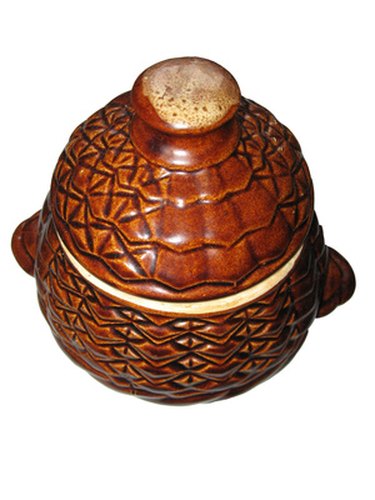
Burnishing and polishing both fall under the same general category of "finishing." They result in a smooth shine or glaze. These terms are most often seen with regards to pottery and metalwork, where they have formal and distinct definitions. However, they are also seen in different capacities, where the difference is not so distinct.
Metalwork
Video of the Day
In metalwork, the burnishing technique produces a smoothed and hardened surface. On the other hand, polishing only results in a smooth, non-hardened surface, the first step to a full burnish. Although burnishing often results in a deeper finish than polishing alone, the only way to be certain whether burnishing has been applied is to conduct a wear test.
Video of the Day
Pottery
Traditionally, the difference between burnishing and polishing in pottery comes down to what tools are used. They are both ways of applying a glaze to a hardened pot. Burnishing involves a smoothed stone or a jewelry burnisher, while a polisher uses a soft cloth instead. Some potters use a combination of both techniques in order to finish a pot.
Cleaning
With regards to cleaning hard and smooth surfaces such as floors, burnishing and polishing are used interchangeably. They both refer to the process of applying a finish which improves the look and durability of the floor.
Other
In general, both burnishing and polishing result in a smooth shine. However, while the two are often used interchangeably, burnishing often refers to a mechanical process, using a mechanical burnisher. Polishing is a more general term and can refer to polishing by hand or by machine. The distinction can affect the product labels -- with mechanical polishers referred to as "burnishers" for instance -- but not their general use.